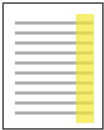 One of my first and probably most memorable encounters with customer satisfaction surveys, methodologies and the like was in 1995. My family and I had just moved from Canada to Texas, and we were in need of a second vehicle that I could drive to work daily. After all, living in Texas means you have to love to drive to live there, unlike Ottawa where I took public transit or rode my bicycle to work.
One of my first and probably most memorable encounters with customer satisfaction surveys, methodologies and the like was in 1995. My family and I had just moved from Canada to Texas, and we were in need of a second vehicle that I could drive to work daily. After all, living in Texas means you have to love to drive to live there, unlike Ottawa where I took public transit or rode my bicycle to work.
So, having had a persistent appreciation of the original styling of the Ford Taurus, and having rented Fords from the Budget rental car company for years since Budget was the company standard, I went to my local Ford dealer to buy a new car. After the test drive and agreement on terms, contract signing and stuff; literally, right before receiving the keys, the sales manager held up a photocopy of the Ford customer satisfaction survey, with a big yellow highlight of the TOP rankings for each horizontal question similar to the graphic. He said:
“In a couple of weeks, you’ll get a Customer Satisfaction survey that looks just like this in the mail from Ford Motor Company. If for any reason, you can’t give me an ‘excellent’ score, call me first. I’ll do whatever I can to make sure we make you happy.”
I laughed. It was a funny and obvious mechanism to gaming the system. I knew that getting a high score on the survey from Ford meant a lot to him and to his dealership. I suspected that this would explain the dealership’s highest customer satisfaction ratings from the manufacturer and that it probably meant a bonus to the sales person.
Not only that, but when the survey did come in the mail, I chuckled all the way through checking of ‘Excellent’ ratings on each of the questions. I really didn’t want to rock the boat and the sales person was nice enough and professional enough to warrant an excellent rating from me. After all, I was happy with my purchase.









